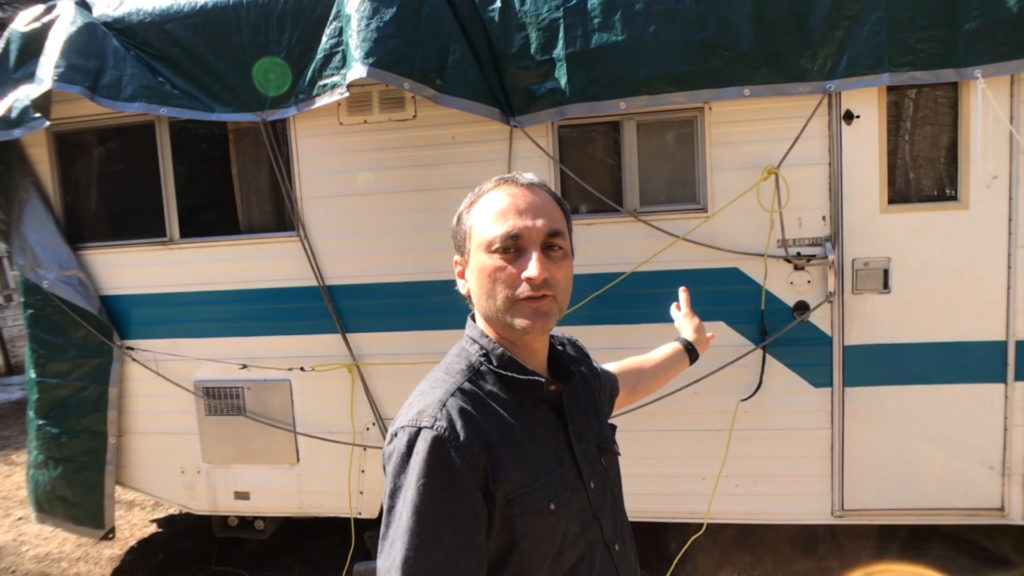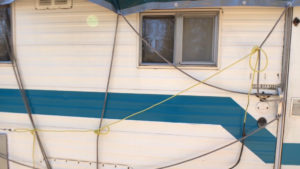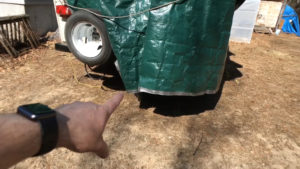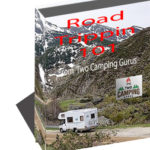
If you plan on covering your RV for the winter take a few minutes and watch this video first. This particular RV is from the 1970s so it’s not so important but it’s a good example you can use as to how not to cover your RV or travel trailer for off-season or the winter months. You can clearly see in this case that there are lots of ropes and straps directly against the RV.

This will result in damaging the finish of the RV as they will rub back and forth throughout the season anytime there’s a wind blowing or inclement weather causing the tarp and ropes to shift. Ideally, it would be best if you had an actual RV cover as they are made out of material that will drastically reduce the possibility of damage to your RV. With that said if you going to use a tarp or anything to cover your RV should cover completely down to the bottom edge but not to the ground. The reason for leaving the space between the bottom of the RV and the ground is to allow for adequate airflow underneath the RV. This will help prevent moisture buildup and decrease the chance of accelerated rusting.

If you are going to use a tarp make sure covers the whole thing so that you can use either bungee’s rope or ratchet straps to secure the tarp underneath the RV so none of those ties down items are against the sides of your travel trailer. By doing this once again you will drastically reduce the chance of damaging the finish of your RV because they will not be there to rub the clearcoat off. In the end, I think it’s a great idea to cover your RV or travel trailer for off-season storage is laws is done properly. Covering it completely on the top so no moisture can penetrate through the roof as well as reducing damage from the sun while at staying in one location for extended lengths of time.
The other thing you see wrong with this particular situation is this RV is parked on the loom. Now loom holds moisture a lot more than gravel or of course a paved driveway so where this RV is parked will definitely cause more moisture buildup underneath the RV on the frame structure and other metal components causing accelerated an early rusting of these materials. This is once again why it’s good to leave space between the tarp and the ground to allow for adequate airflow but any rate it’s still not a good idea to store or park any vehicle on the loom as like I said earlier it holds the moisture a lot longer. Hopefully, you found this video helpful.
Don’t forget to download you free ebook and checklist
We are a participant in the Amazon Services LLC Associates Program (and other potential affiliate networks), an affiliate advertising program designed to provide a means for us to earn fees by linking to Amazon.com and affiliated sites
